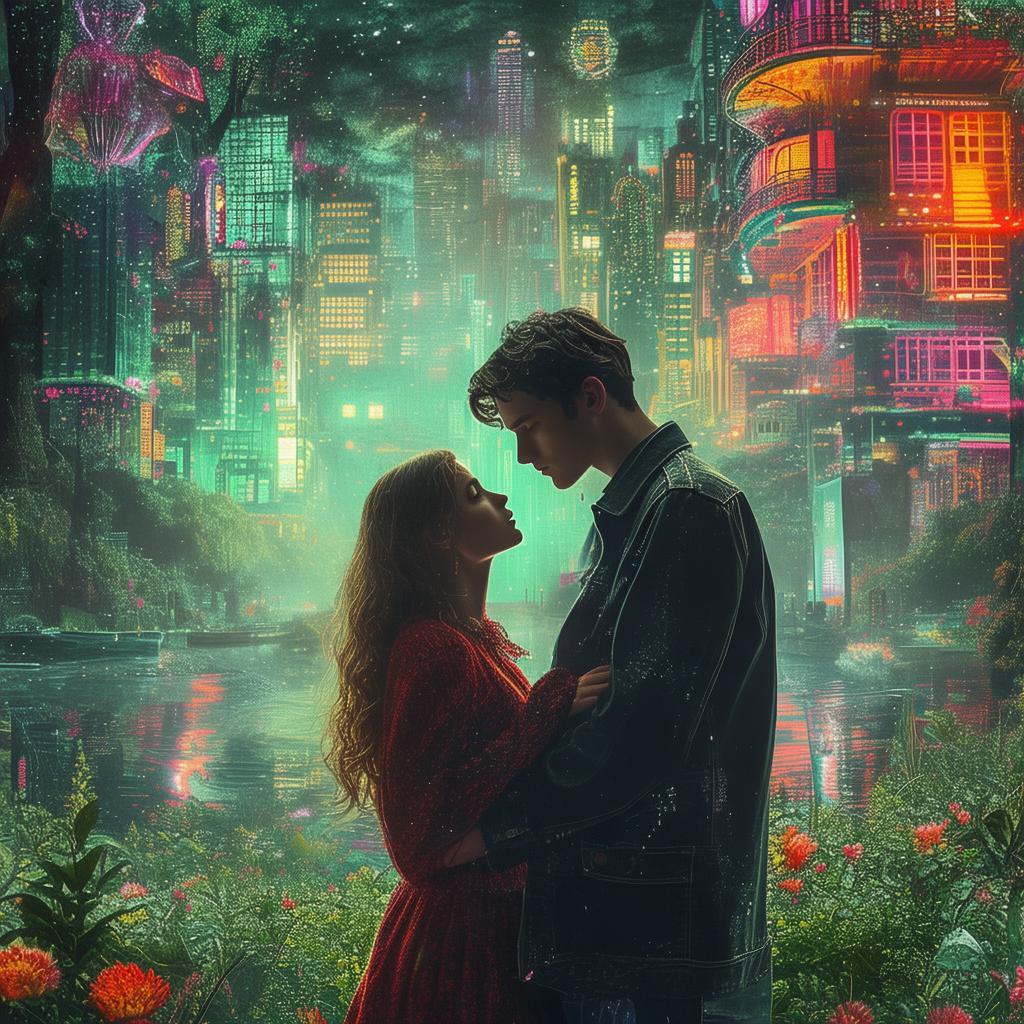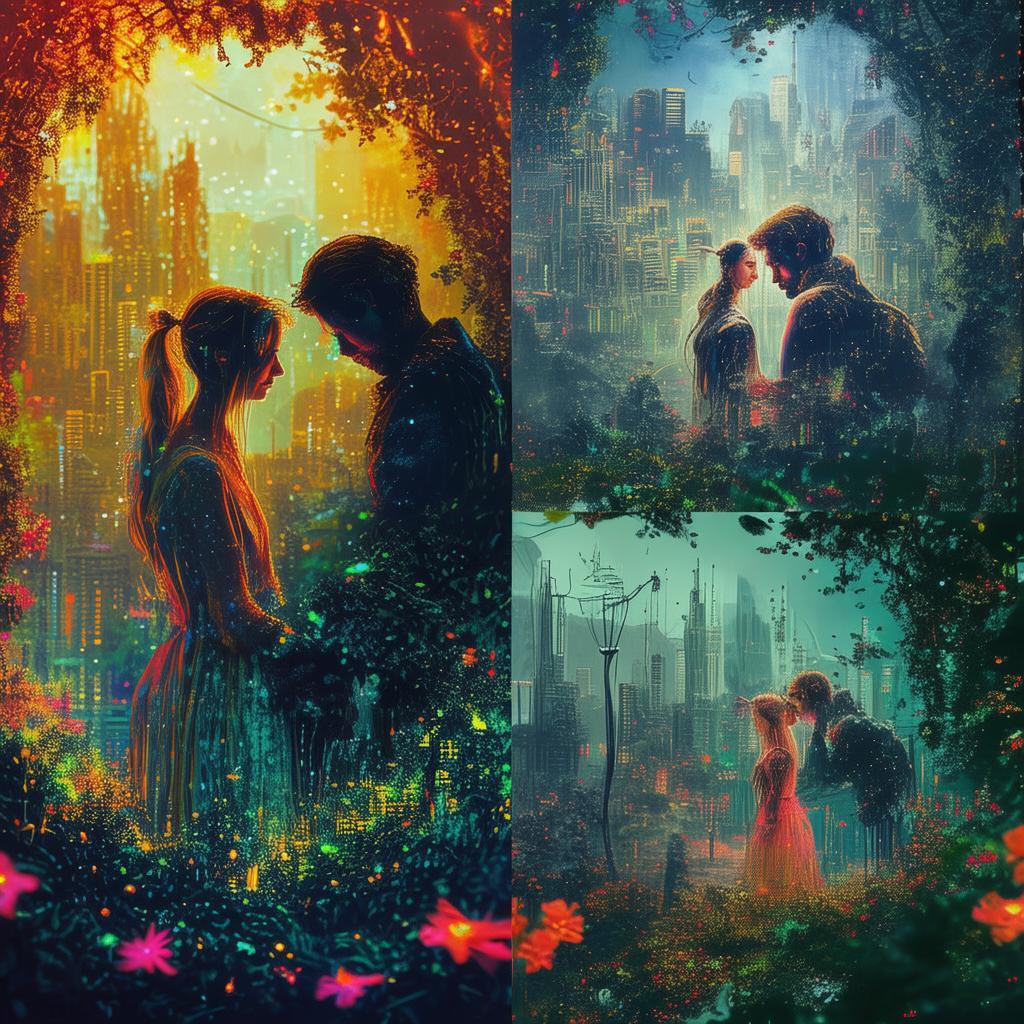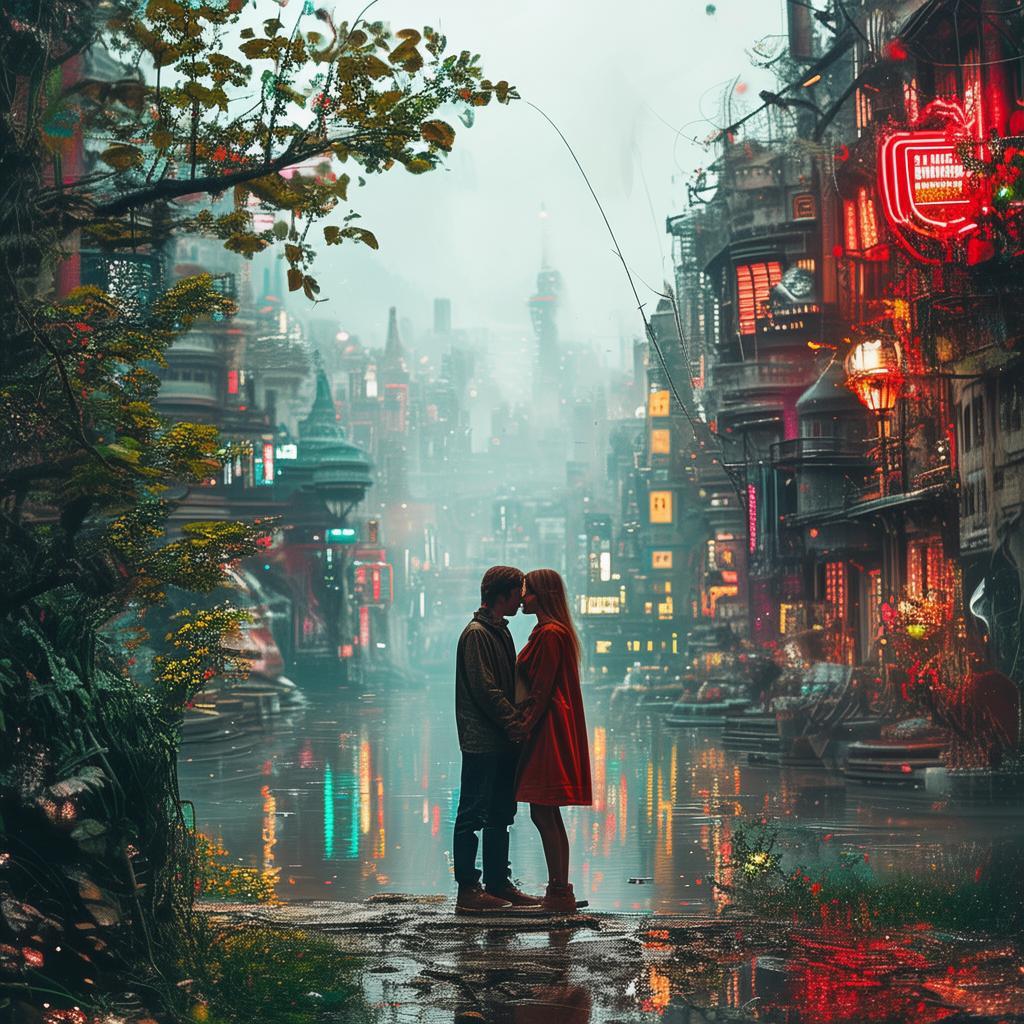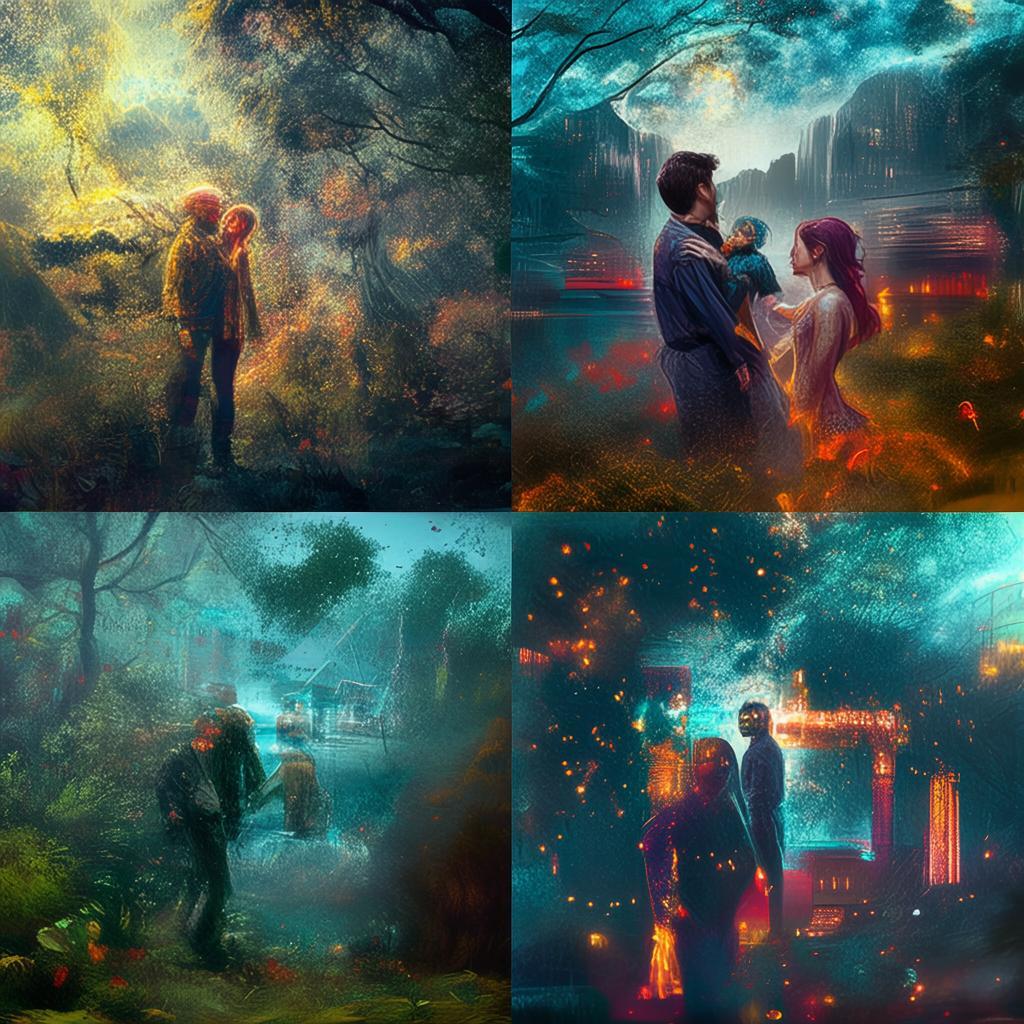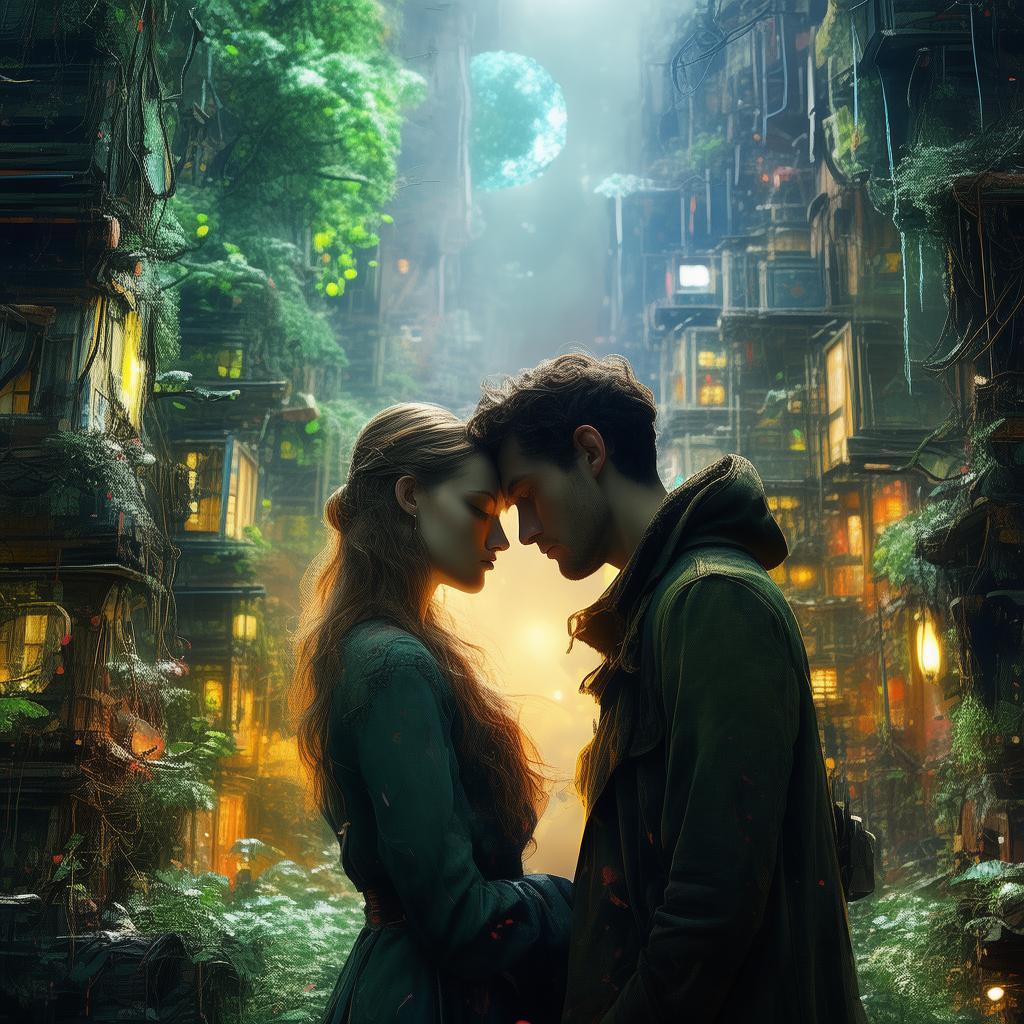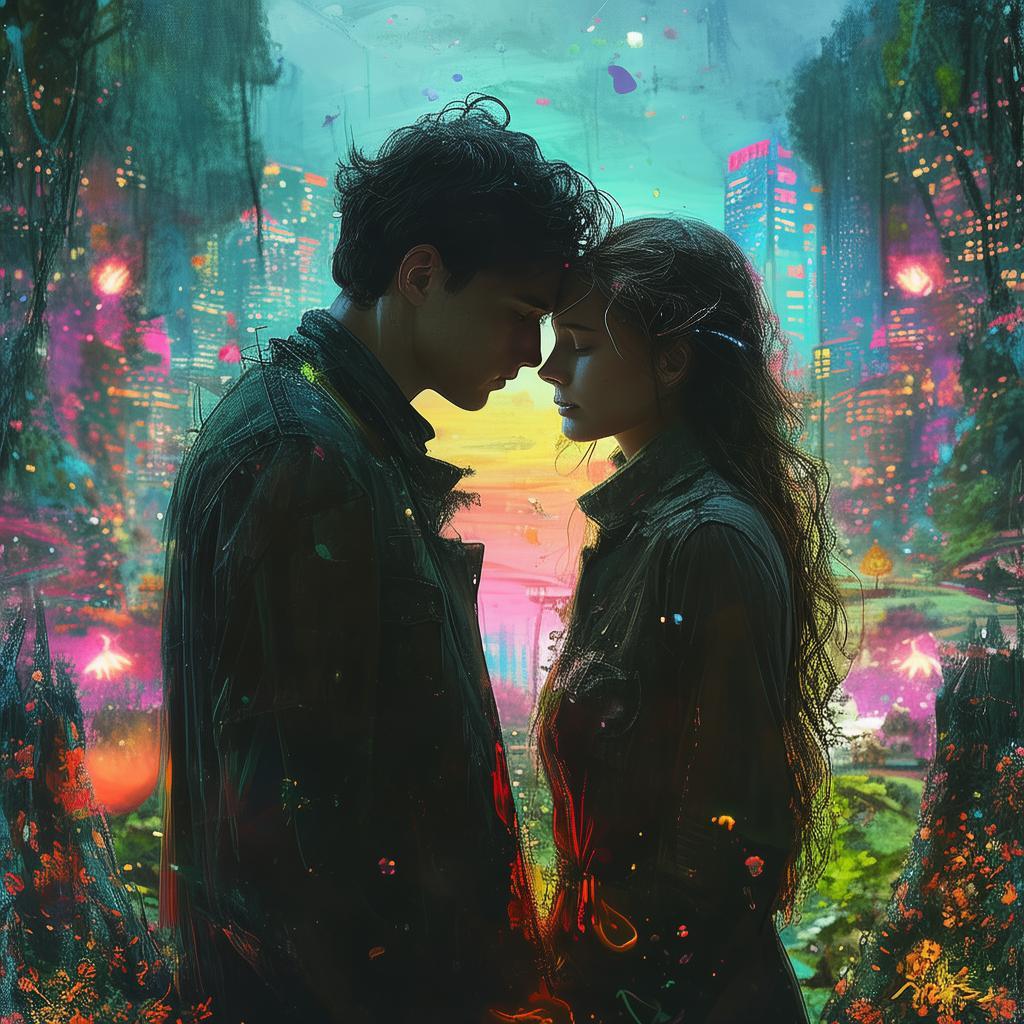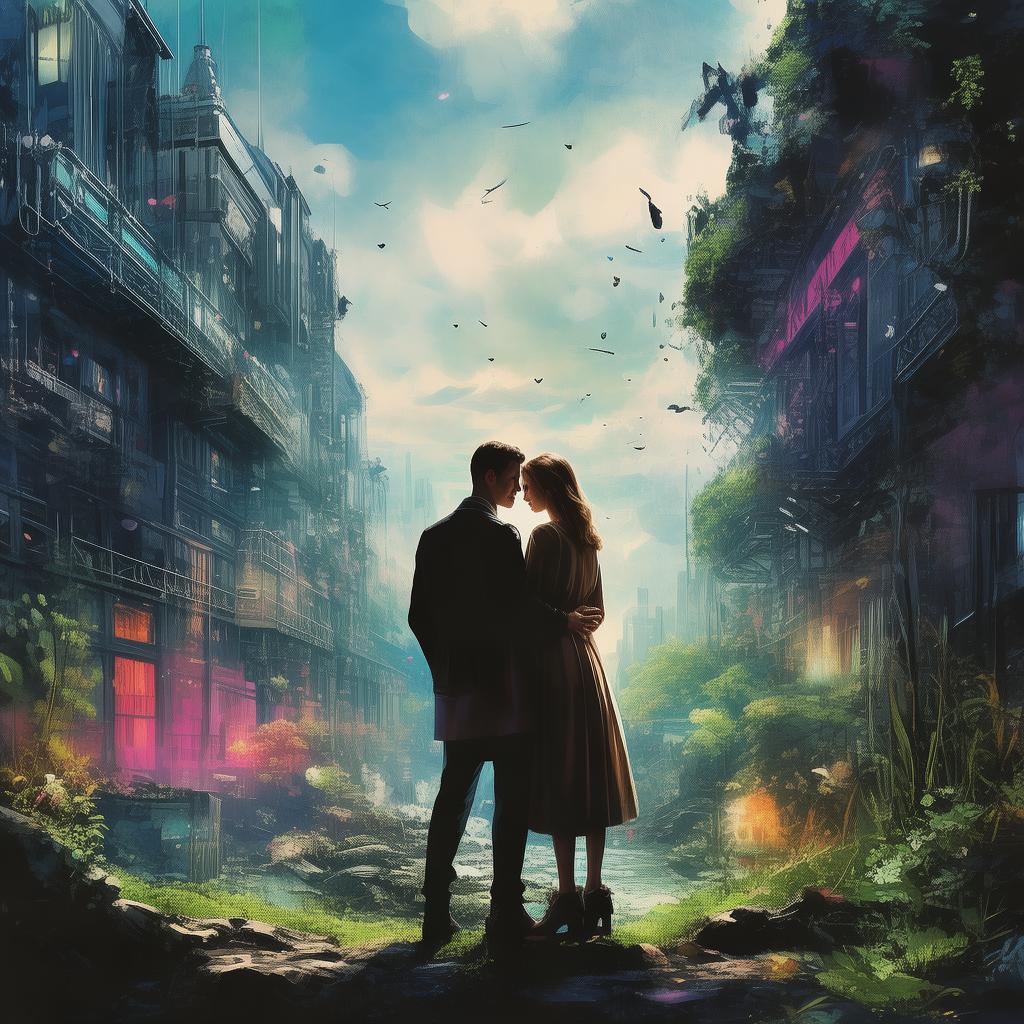Whispers of the Canvas: A Love in Black and White
In the heart of Paris, under the whispering boughs of the Luxembourg Gardens, there lived an artist named Édouard. His hands, once deft in the creation of life-like landscapes, now moved with a new purpose. Édouard had found a canvas unlike any other, a portrait of a woman whose eyes seemed to hold the secrets of the universe. Her gaze was piercing, her beauty ethereal, and her presence felt like a breath of cool air in the stuffy studio.
The portrait was unsigned, but the style was unmistakably that of the great Jean-Baptiste-Siméon Chardin. The woman in the painting had hair the color of midnight, eyes as deep as the ocean, and a dress that seemed to be woven from the shadows. Édouard was captivated, and his passion for the portrait led him to uncover a story of love, loss, and the delicate thread of fate.
One evening, as he worked on the painting, the door creaked open. A woman with a voice like a lute in the night stepped into the room. She was the spitting image of the woman in the portrait, and her presence was as commanding as the painting itself. "You have been looking at me," she said, her voice rich and smooth.
Édouard's heart raced. "I have," he replied, "and I have been trying to understand you, your story."
The woman, whose name was Isolde, began to speak. She was a painter herself, once a protege of Chardin, who had taken her under his wing. They had been lovers, but their love had been forbidden. Chardin's reputation was at stake, and Isolde's life was in danger. In a moment of despair, she had painted herself, capturing the essence of her love for Chardin and the pain of their forbidden love.
Isolde's voice faded as the room around them seemed to blur. Édouard knew that Isolde was not a mere apparition, but a manifestation of the painting's story. He realized that the painting was a canvas of fate, a testament to the love that had never been and the pain that had never been healed.
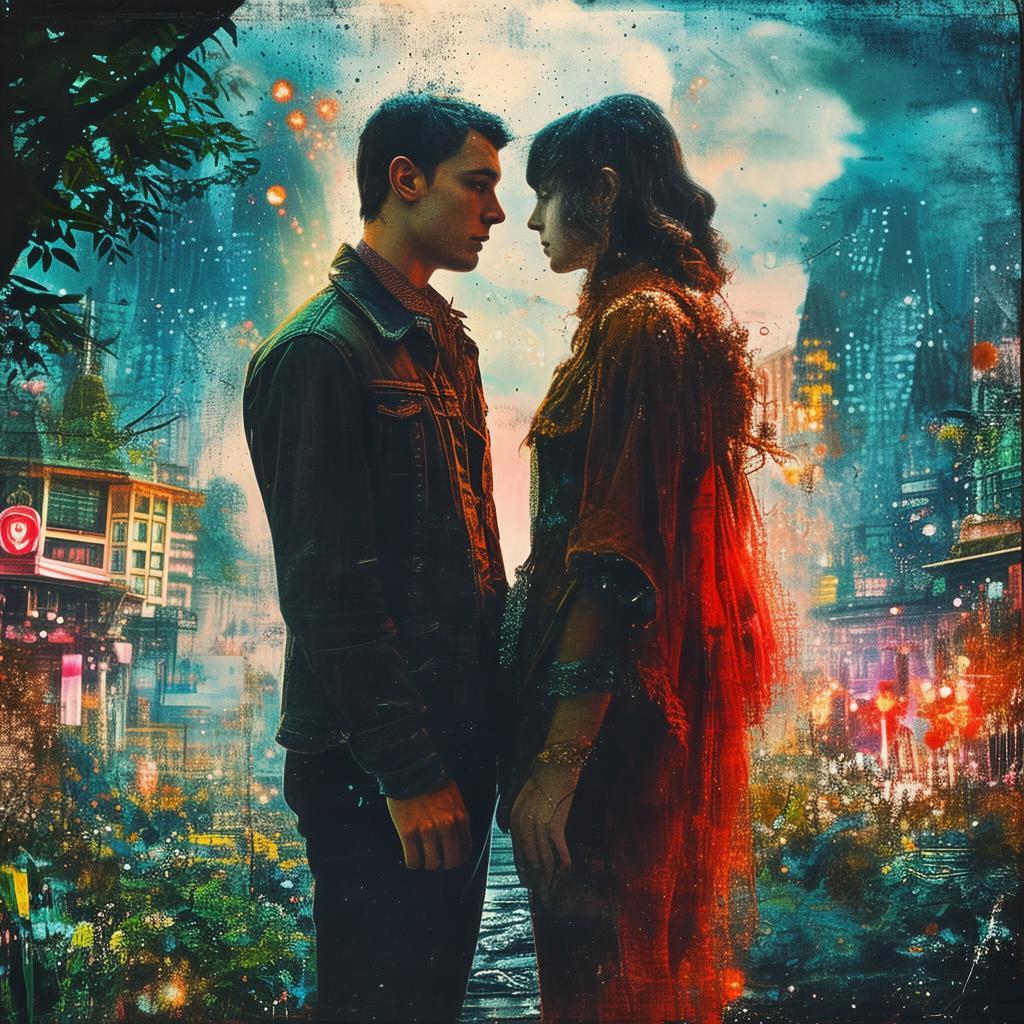
Days turned into weeks, and Édouard found himself consumed by Isolde's story. He began to paint her, to give her life on the canvas once more. His art was a reflection of his heart, and as he painted, he felt a connection to Isolde grow. Her spirit seemed to guide his hand, and her story unfolded before him.
One evening, as he worked on a new painting, Édouard felt a presence behind him. He turned to see Isolde, her eyes brimming with emotion. "You have captured me," she said. "You have given me life again."
Édouard's heart swelled with pride and love. "I have tried to," he said, "but I have also learned something about love. It is not just about the two of us. It is about the world, and the way we leave our mark on it."
Isolde nodded, her eyes reflecting the light of the chandelier above. "You have become a part of my story, Édouard. You have brought my love back to life."
As the years passed, Édouard's paintings of Isolde became famous. They were not just portraits, but a testament to the power of love, the resilience of the human spirit, and the enduring connection between art and life. The canvas of fate, once a silent witness to a forbidden love, had become a beacon of hope, a reminder that even in the darkest times, love could shine through.
In the end, Édouard's own story was one of love and redemption. He had found a purpose in his art, a way to honor Isolde and the love that had never been. The painting had become a symbol of his own journey, a testament to the power of fate and the beauty of love in black and white.
✨ Original Statement ✨
All articles published on this website (including but not limited to text, images, videos, and other content) are original or authorized for reposting and are protected by relevant laws. Without the explicit written permission of this website, no individual or organization may copy, modify, repost, or use the content for commercial purposes.
If you need to quote or cooperate, please contact this site for authorization. We reserve the right to pursue legal responsibility for any unauthorized use.
Hereby declared.


